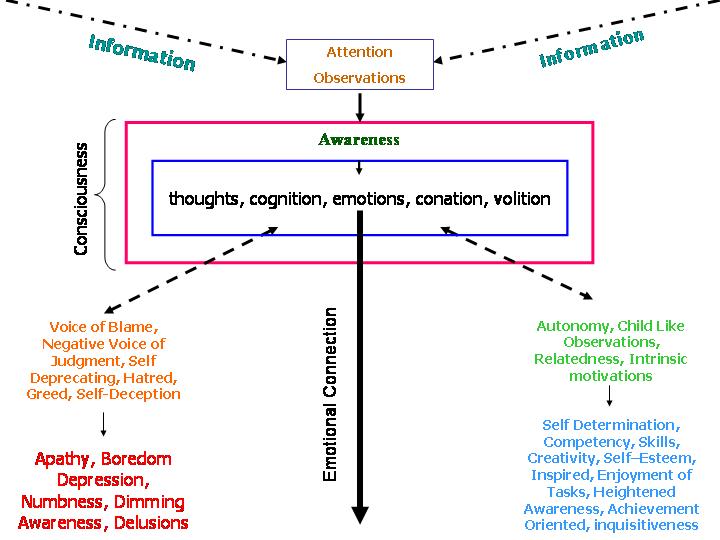The Decline of Childlike Motivation: A Scientific Exploration
Roots of Creativity in Childhood
Important dimensions of adult creativity have their roots in the childhood of the creator. Howard Gardner’s research in Creating Minds suggests that the radiant intelligence and creativity observed in children often diminish as they grow into adults. Sigmund Freud also noted the stark contrast between the vibrant mentality of a child and the often subdued mindset of an adult. Understanding why this happens requires exploring the psychological theories and research on intrinsic motivation, personal causation, and the impact of external rewards.
Personal Causation and Intrinsic Motivation
Richard deCharms and Personal Causation
In 1968, psychological theoretician Richard deCharms published a seminal work discussing the importance of personal causation. He posited that the key to intrinsic motivation is the desire to be the “origin” of one’s own actions rather than a “pawn” manipulated by external forces. Intrinsic motivation is linked to richer experiences, improved self-esteem, better conceptual understanding, greater creativity, achieving competency, and enhanced problem-solving abilities. DeCharms’ research suggested that external rewards undermine intrinsic motivation by shifting the perception of control from internal to external sources.
The Impact of Rewards on Motivation
The Undermining Effect of Rewards
When rewards are introduced, they can transform intrinsically motivated activities into extrinsically motivated ones. This phenomenon, known as the overjustification effect, occurs when external incentives decrease a person’s intrinsic motivation to perform a task. Research has shown that when people receive rewards for activities they already enjoy, their internal desire for mastery diminishes. This shift in motivation is detrimental to the sense of personal causation and can turn play into work, making individuals feel like pawns rather than autonomous agents.
Control and Alienation
Control, whether through coercion or monetary incentives, often leads to alienation. When people feel controlled by external factors, they lose touch with their intrinsic motivation and authenticity. This alienation results in a diminished sense of self and a lack of genuine engagement in activities. As Robert Henri eloquently stated, intrinsic motivation leads to “a more than ordinary moment of existence,” a state that is lost when external controls dominate.
Internalization of Values and Regulations
Types of Internalization: Introjection vs. Integration
To navigate social environments, children internalize the values and rules of their groups and society. However, internalization can take two forms: introjection and integration. Introjection involves adopting rules and values without fully digesting them, leading to rigid adherence and a lack of true autonomy. In contrast, integration involves assimilating these values into one’s self-concept, resulting in autonomous functioning.
The Role of Autonomy in Integration
Autonomy plays a crucial role in the integration of values and regulations. While relatedness and competence can motivate introjection, autonomy champions the integration process. When individuals feel autonomous, they are more likely to accept responsibility for important but uninteresting tasks, as these tasks become aligned with their self-concept. This integration fosters a sense of authenticity and self-determination.
Coping with Failure: Introjection vs. Integration
Impact on Students
Research has shown that students who rely on introjection tend to be more anxious about school and exhibit maladaptive coping patterns when faced with failure. In contrast, students who integrate values and regulations into their self-concept enjoy school more and cope with setbacks in healthier ways. Those who introject often present a facade, losing touch with their true selves as they adhere to societal shoulds, musts, and have-tos.
The Importance of Relatedness
Developing Meaningful Relationships
While autonomy and child-like observation skills are crucial for intrinsic motivation, relatedness also plays a significant role. Developing meaningful and lasting relationships involves sharing awareness and fostering genuine connections with others. These relationships provide emotional support, enhance well-being, and contribute to a sense of belonging.
Neuroscientific Insights into Relatedness
Neuroscience has shown that social connections activate the brain’s reward system, releasing neurotransmitters like oxytocin that promote feelings of trust and bonding. These connections are essential for mental health and resilience, highlighting the importance of relatedness in maintaining motivation and well-being.
The Decline of Childlike Motivation
Why Motivation Declines
Several factors contribute to the decline of childlike motivation as individuals grow older:
- External Rewards: The introduction of external rewards shifts the focus from intrinsic enjoyment to extrinsic incentives, undermining personal causation.
- Social Pressures: The need to conform to societal expectations and internalize rigid rules leads to a loss of authenticity and intrinsic motivation.
- Alienation: Feeling controlled by external factors results in alienation and a diminished sense of self.
- Lack of Autonomy: Without autonomy, individuals struggle to integrate values and regulations into their self-concept, leading to rigid and maladaptive behaviors.
Restoring Childlike Motivation
Fostering Autonomy and Relatedness
To restore childlike motivation, it is essential to foster autonomy and relatedness:
- Promote Autonomy: Encourage self-directed learning and decision-making. Provide opportunities for individuals to take ownership of their actions and responsibilities.
- Enhance Relatedness: Build strong social connections and create supportive environments. Foster a sense of community and belonging.
- Cultivate Intrinsic Motivation: Focus on activities that are inherently enjoyable and meaningful. Reduce the emphasis on external rewards and controls.
Understanding the decline of childlike motivation requires exploring the interplay between intrinsic motivation, autonomy, and relatedness. By fostering environments that support autonomy and meaningful connections, we can help individuals reclaim their intrinsic motivation and authenticity. This approach not only enhances personal well-being but also promotes creativity, competence, and overall life satisfaction. Through scientific insights and practical applications, we can create conditions that nurture the innate vitality and excitement that all children possess, allowing it to flourish throughout adulthood.
Here is our model:
 |
|---|
The Science of Emotional Connections and Social Interactions
Emotional Awareness in Communication
Connecting with others is not an innate or mystical ability; it is a skill that can be learned and honed, much like meditation. When attempting to connect with others, the emotional part of our awareness plays a crucial role. This process involves interpreting and responding to emotional cues or hints given by others. These cues may be accepted positively, ignored, or met with hostility, depending on one’s emotional state and awareness.
Neurobiological Basis of Emotional Connections
The Role of the Brain in Emotional Connections
The brain’s emotional processing centers, particularly the amygdala and the prefrontal cortex, are critical in interpreting and responding to emotional cues. The amygdala detects emotional significance, while the prefrontal cortex modulates responses to these emotions, allowing for appropriate social interactions. Individuals operating from a positive emotional state (right side) are more likely to respond positively to social cues, fostering better connections. In contrast, those in a negative emotional state (left side) may respond harshly, leading to conflicts.
Oxytocin and Social Bonding
Oxytocin, often referred to as the “love hormone,” plays a significant role in social bonding and emotional connections. It is released during positive social interactions, such as hugging, touching, and even meaningful conversations. Oxytocin enhances trust and empathy, facilitating deeper emotional connections.
Conflict and Resolution in Relationships
Managing Disagreements
Disagreements and conflicts are natural in any relationship. However, the manner in which these conflicts are managed can significantly impact the relationship’s health. Couples or friends operating from a positive emotional state use their “emotional bank” to navigate disagreements humorously and affectionately. This approach relies on mutual respect and a reservoir of positive past experiences.
Emotional Resilience and Conflict Resolution
Research in psychology suggests that emotional resilience, the ability to recover from emotional setbacks, is crucial in managing conflicts effectively. Emotional resilience is enhanced by positive social interactions and strong emotional bonds. When individuals have a robust emotional connection, they are more likely to approach conflicts with a problem-solving attitude rather than hostility.
Importance of Strong Attention and Observation
Attention and Observation in Relationships
Strong attention and observation are critical in maintaining emotional connections. When individuals stop paying attention to their partners or ignore the subjects of disagreement, emotional disconnection occurs. This lack of shared awareness can lead to the gradual deterioration of the relationship.
Mindfulness and Emotional Awareness
Mindfulness practices, which involve focused attention and observation, can enhance emotional awareness and improve relationships. By being fully present and attentive, individuals can better understand their partner’s emotional states and respond more compassionately.
The Role of Self-Disclosure
Self-Disclosure and Deep Connections
Self-disclosure, the act of sharing one’s innermost thoughts and feelings, is essential for deep emotional connections. Research indicates that self-disclosure fosters intimacy and trust, allowing individuals to form stronger bonds. However, societal norms often discourage self-disclosure, even among close partners, leading to superficial connections.
Barriers to Self-Disclosure
Several factors hinder self-disclosure, including fear of judgment, past negative experiences, and cultural norms. Overcoming these barriers requires creating a safe and supportive environment where individuals feel comfortable sharing their true selves.
Enhancing Emotional Connections
Developing Emotional Communication Skills
Improving emotional communication skills involves developing better listening and observation abilities. Engaging in activities that promote child-like joy, playfulness, humor, and shared experiences can strengthen emotional connections. Examples include participating in yoga, art galleries, cooking classes, dance, and other group activities.
Child-like Observation and Playfulness
Child-like observation, characterized by curiosity, openness, and a sense of wonder, can enhance emotional connections. This approach involves paying close attention to others’ emotional states and responding with empathy and compassion. Child-like playfulness, including humor and shared fantasies, can also foster deeper connections by creating positive and enjoyable interactions.
Overcoming Loneliness in Modern Society
The Paradox of Modern Connectivity
Despite being surrounded by people, many individuals feel lonely due to the lack of genuine emotional connections. This phenomenon is often referred to as “social isolation in the crowd.” The key to overcoming this loneliness lies in developing meaningful relationships based on shared awareness and emotional connection.
Building Genuine Connections
To build genuine connections, individuals must focus on fostering deep emotional bonds rather than superficial interactions. This involves practicing self-disclosure, paying attention to others’ emotional cues, and engaging in activities that promote mutual understanding and joy.
Connecting with others on an emotional level is a skill that can be developed through mindful practices, strong attention, and observation. By fostering autonomy, relatedness, and emotional awareness, individuals can form meaningful and lasting relationships. Overcoming barriers to self-disclosure and engaging in activities that promote child-like joy and playfulness are essential for enhancing emotional connections. By understanding and applying these principles, individuals can achieve deeper, more fulfilling relationships and overcome the loneliness prevalent in modern society. Through scientific insights and practical applications, we can cultivate the skills necessary for building genuine emotional connections.
